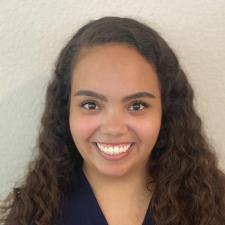
Julia G. answered • 03/31/21
4 Degrees?! Pick me!!
First-Generation Antipsychotics
Also called Typical Antipsychotics
Example: Haloperidol
Properties:
Block the action of D2 receptors for dopamine, muscarinic receptors for acetylcholine, alpha1 receptors for norepinephrine, and H1 receptors for histamine.
Desired Effects:
Most effective on the positive symptoms of schizophrenia like delusions (e.g., paranoia, grandiosity) and hallucinations.
Undesirable Effects:
(1) Acute Dystonia: Sudden, sustained contraction of one or several muscle groups usually of the head and neck.
(a) Monitor and ensure open airway
(b) Administer antiparkinsonian agent IM (relief in 5 to 15 minutes)
(c) Reassure the patient that although frightening, they are not dangerous except when the airway is complicated (which is rare)
(d) Stay with the patient and provide support
(e) Assist patient to understand the event and avert mistrust of medications
(2) Akathisia: Motor restlessness that causes pacing, repetitive movements, or an inability to stay still or remain in one place
(a) Ensure that the offending drug isn't given as a remedy (sometimes more of the drug that caused the akathisia is given mistakenly, making the problem worse)
(b) Decrease patient anxiety
(c) Administer anti-Parkinsonian agent
(d) Talk to physician about discontinuing neuroleptic
(3) Pseudoparkinsonism: A temporary group of symptoms that mimic Parkinson's disease (e.g., tremor, reduced accessory movements, gait impairment, reduced facial expressiveness, and slowing of motor behavior.
(a) Administer oral anti-Parkinsonian agent
(b) Monitor for anti-Parkinsonian agent abuse
(c) Provide towel or handkerchief to wipe excess saliva
(d) Teach how to reduce fall risk
(4) Tardive Dyskinesia: A persistent EPS side effect involving involuntary rhythmic movements that often persists even after medication has been discontinued
(a) Use the Abnormal Involuntary Movement Scale (AIMS) to identify and track involuntary movements
(b) Administer valbenazine capsules for treatment in adults as prescribed by HCP (monitor for sleepiness and QT prolongation and teach the patient to avoid driving and operating heavy machinery until they know how the medication affects them)
Second-Generation Antipsychotics
Also called Atypical Antipsychotics
Example: Clozapine (Clozaril)
Properties
(1) Produce fewer EPS and other side effects
(2) Chosen as first-line treatment over 1st-Generation (Typical) Antipsychotics
Desired Effects
(1) Target negative and positive symptoms of schizophrenia
Undesirable Effects
(1) Metabolic Syndrome
(a) Teach the patient to minimize weight gain through proper nutrition and physical activity
(b) Teach the patient and family about the importance of regular medical evaluation and care to Identify and correct possible changes that could lead to this syndrome and increase the risk of premature illness and death
(2) Akathisia
(a) Consult HCP about medicaiton change
(b) Administer antiparkinsonian agent or lorazepam as ordered
(c) Engage the patient in relaxation exercises
(d) Distinguish agitation from akathisia
(e) Encourage patient that akathisia usually subsides when the antipsychotic is discontinued (except for tardive dyskinesia)
(3) Sexual Dysfunction
(a) Contact HCP for possible medication change
(b) Teach the patient about artificial lubricants for vaginal dryness or dryness during intercourse
Third-Generation Antipsychotics
Some consider 3rd-Generation Antipsychotics to be a subset of 2nd-Generation Antipsychotics.
Properties
(1) Dopamine stabilizers (reduce dopamine activity in some brain regions while increasing it in others)
(2) D2 partial agonists (reduce effective level of dopamine activity)
(3) Partial agonist to D3 (and some D2) to improve cognitive symptoms
Desired Effects
(1) Target negative and positive symptoms of schizophrenia
Undesirable Effects
(1) No new information.




